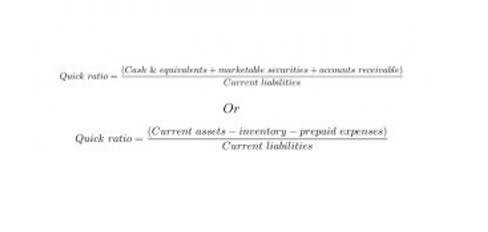Allowance for doubtful accounts & bad debt expenses: Calculation

We will reverse the previous entry as now there are chances of getting $40,000 as outstanding accounts receivables. One way to figure out whether one has estimated sufficient balance for the allowance for doubtful debts is to look at the account balance of the doubtful accounts. A contra-asset is an asset account with a negative (credit) or zero account balance that displays the real value of accounts receivable. Typically, accountants only use the direct write-off method to record insignificant debts, since it can lead to inaccurate income figures.

What is a bad debt expense?

Recovering an account may involve working with the debtor directly, working with a collection Coffee Shop Accounting agency, or pursuing legal action. The customer who filed for bankruptcy on August 3 manages to pay the company back the amount owed on September 10. The company would then reinstate the account that was initially written off on August 3. Vivek Shankar specializes in content for fintech and financial services companies.

Step 3: Calculate estimated uncollectible amounts for each category
- The losses that occur due to uncollectible accounts are the losses that come from the credit sales.
- The allowance reserve is set in the period in which the revenue was “earned,” but the estimation occurs before the actual transactions and customers can be identified.
- In this journal entry, total assets on the balance sheet decrease by $300 while total expenses on the income statement increase by the same amount.
- If actual experience differs, then management adjusts its estimation methodology to bring the reserve more into alignment with actual results.
- This is due to it providing more detailed information about the receivables and making our estimation of allowance for doubtful accounts to be more accurate.
- If the allowance is less than the amount of these overdue receivables, the allowance is probably insufficient.
- It is a contra-asset account, meaning it reduces the overall value of accounts receivable on the balance sheet.
In this journal entry, total assets on the balance sheet decrease by $300 while total expenses on the income statement increase by the same amount. The customer has $5,000 in unpaid invoices, so its allowance for doubtful accounts is $500, or $5,000 x 10%. Using the example above, let’s say that a company reports an accounts receivable debit balance of $1,000,000 on June 30.
Cash Flow Statement
Modern accounting software often includes analytics tools that can track and visualize changes in doubtful accounts over time. These tools can highlight anomalies and provide predictive insights, enabling proactive management of receivables. For example, machine learning algorithms can analyze historical data to forecast future bad debt trends, allowing businesses to adjust their strategies accordingly. Finding the proper amount for the allowance for doubtful accounts is not an instant process. To create a standard allowance, have those financial records that indicate how many accounts have not been collected. Then create an average amount of money lost over the number of bookkeeping years measured.

Financial Close Solution
For example, if 3% of your sales were uncollectible, set aside 3% of your sales in your ADA account. Say you have a total of $70,000 in accounts receivable, your allowance for doubtful accounts would be $2,100 ($70,000 X 3%). When you create an allowance for doubtful accounts, you must record the amount on your business balance sheet. When an account is determined to be uncollectible, you debit the Allowance for Doubtful allowance for doubtful accounts normal balance Accounts and credit Accounts Receivable. This entry removes the uncollectible amount from both the allowance and the receivables balance. When bad debt surpasses the allowance for doubtful accounts, the initial estimate of uncollectible amounts was underestimated.
Advance Your Accounting and Bookkeeping Career
- The accounts receivable aging method uses your company’s accounts receivable aging report to determine the bad debt allowance.
- The most prevalent approach — called the “percent of sales method” — uses a pre-determined percentage of total sales assumption to forecast the uncollectible credit sales.
- It’s an important part of the overall AR process since it helps businesses develop a clear picture of their cash flow.
- So for an allowance for doubtful accounts journal entry, credit entries increase the amount in this account and debits decrease the amount in this account.
- In fact, according to a recent survey conducted by Atradius Payment, in 2020 there was an 86% increase in payment defaults on B2B invoices in Canada when compared to the previous year.
- But, you’ll want to do everything in your power to prevent receivables from becoming uncollectible before things get to that point.
The allowance for doubtful accounts (or the “bad debt” reserve) appears on the balance sheet to anticipate credit sales where the customer cannot fulfill their payment obligations. The accounts receivable aging method is a report that lists unpaid customer invoices by date ranges and applies a rate of default to each date range. In the AR aging method of calculating AFDA, you assign a default risk percentage to each AR aging bracket. In the customer risk classification method, you instead assign each customer a default risk percentage. You can examine historical payment collection data for a customer and calculate the percentage of invoices on which they tend to default.

